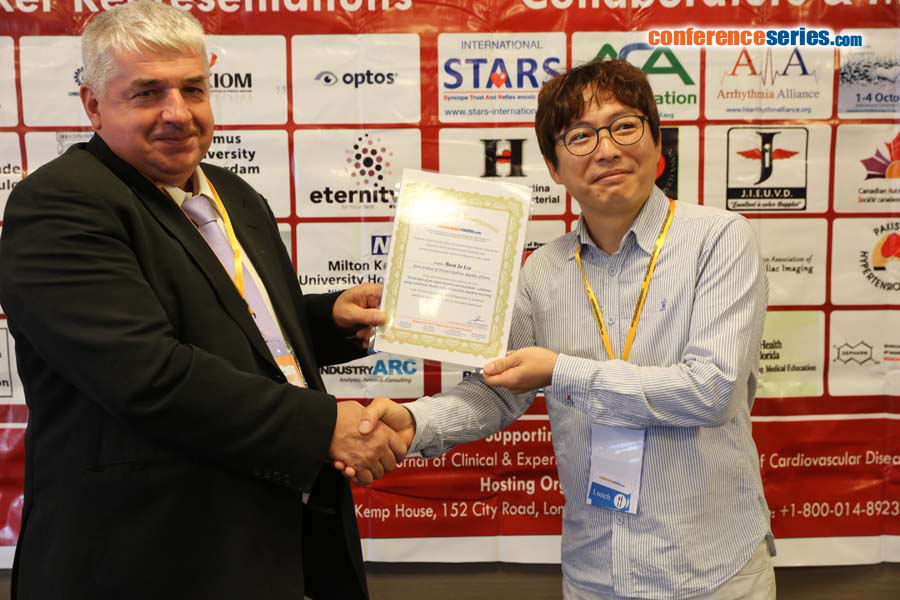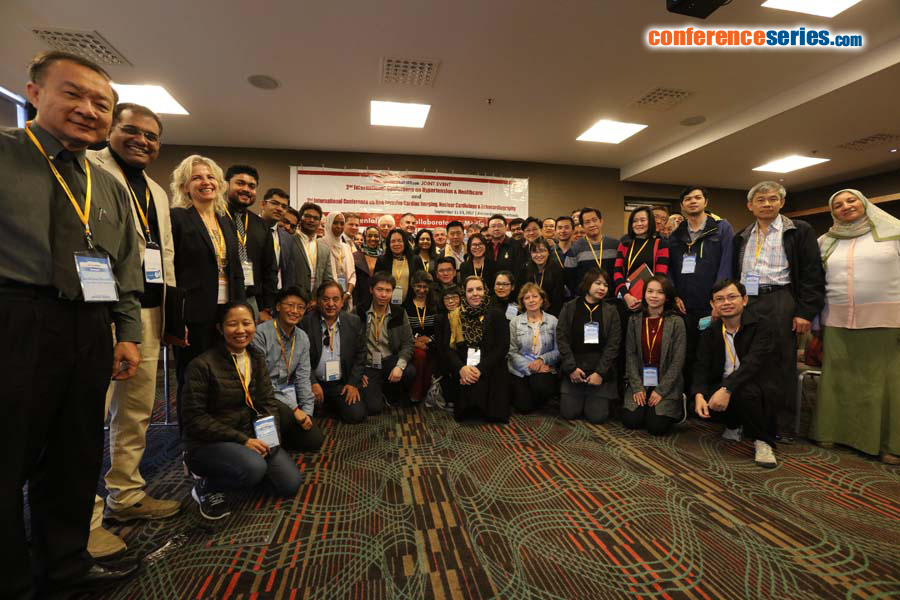2nd International Conference on Non-invasive Cardiac Imaging, Nuclear Cardiology & Echocardiography
Amsterdam, Netherlands

Bum Ju Lee
Korea Institute of Oriental Medicine, KR
Title: Prediction of pre-hypertension and metabolic syndrome using combined obesity indices based on machine learning
Biography
Biography: Bum Ju Lee
Abstract
Statement of the Problem: Hypertension and metabolic syndrome (MetS) are a common health problem. Many previous studies reported that MetS and hypertension were strongly associated with obesity. However, no studies on the prediction of pre-hypertension and MetS using combined anthropometric indices related to obesity have been reported. The objectives of this study were to predict pre-hypertension and MetS using combined anthropometric indices based on machine learning and to evaluate the quality of various predictive models.
Methodology & Theoretical Orientation: A total of 3,927 subjects aged 40-70 years participated in this study. To diagnose pre-hypertension and MetS, we considered the recommendations of the National Cholesterol Education Program Adult Treatment Panel III. For anthropometric indices, eight circumferences (forehead, neck, axilla, chest, rib, waist, pelvis, and hip) were measured. We calculated the ratios between the indices. Finally, we extracted a total of 41 variables including age, weight, height, waist-to-hip ratio, waist-to-height ratio, body mass index, neck-to-rib ratio, and so on. For model building, correlation-based feature selection and wrapper-based variable selection based on logistic regression (LR) and naïve Bayes (NB) were used to identify the optimal variable subsets.
Findings: There were 1,605 men with pre-hypertension (41%) and 1,136 (29%) with MetS. We tested six models in each disease (Figure 1). The LR-wrapper model showed the highest predictive power. The ROC values for the pre-hypertension and MetS were 0.645 and 0.819, respectively. In MetS, the model using combined indices showed slight improvements in the ROC compared with the waist circumference (ROC = 0.809 by NB and LR), even though waist circumference is one of the five components used to diagnose MetS and is a strong predictor of MetS.
Conclusion & Significance: Our results provide insight into a simple and inexpensive method that could be used to identify pre-hypertension and MetS in initial health screening.

Figure 1: Predictive power of metabolic syndrome and pre-hypertension using combined anthropometric indices (NB: naïve Bayes, LR: logistic regression, CFS: correlation-based feature selection method, wrapper: wrapper-based feature selection method, ROC: the receiver operating characteristic curve)
References:
- Lee BJ, Kim JY (2014) A comparison of the predictive power of anthropometric indices for hypertension and hypotension risk. PLoS One 9:e84897.
- Asayama K, Sato A, Ohkubo T, et al. (2009) The association between masked hypertension and waist circumference as an obesity-related anthropometric index for metabolic syndrome: the Ohasama study. Hypertens Res 32:438-443.
- Lee BJ, Ku B, Nam J, et al. (2014) Prediction of fasting plasma glucose status using anthropometric measures for diagnosing type 2 diabetes. IEEE J Biomed Health Inform 18:555-561.
- Lee BJ, Nam J, Kim JY (2016) Predictors of metabolic abnormalities in phenotypes that combined anthropometric indices and triglycerides. BMC Complement Altern Med 16:59.
- Lee BJ, Kim JY (2016) Identification of Type 2 Diabetes Risk Factors Using Phenotypes Consisting of Anthropometry and Triglycerides based on Machine Learning. IEEE J Biomed Health Inform 20:39-46





